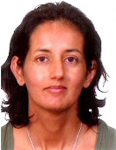Safeguarding Multiple Benefits
-----------------
UN-REDD Programme Officer, Wahida Patwa-Shah and UN-REDD Natural Resources Officer, Linda Rosengren, look beyond carbon to flesh out the many ways forests provide benefits to society, and highlight steps the UN-REDD Programme is taking to ensure these benefits are safeguarded in national REDD+ strategies.
The primary function of REDD+ is to realize green house gas emission reductions from forest ecosystems to avoid the worst effects of climate change. Apart from this substantial carbon sequestration and storage function, forest ecosystems harbor many important development benefits or ‘safeguards’ against disasters. These services underpin human well being, especially for those most vulnerable and for 1.6 billion forest dependent people, by providing fuelwood, timber, shelter, non-timber forest products such as fruits, medicines, gums, mushrooms as well as recreation and cultural services. Yet, as the recent 2010 Global Biodiversity Outlook 3 so clearly communicates (see chart below), these vital services are being undermined.
REDD+ is valuing and targeting one of these services: carbon. Still, there is great potential to safeguard and bundle other services as well. These benefits may be for example, high carbon densities occurring in biodiversity-rich natural forests and rehabilitation of degraded forests with indigenous trees to improve watershed services. We need to be more explicit about safeguarding these multiple benefits of REDD+ as they may not feature automatically in the range of strategic REDD+ options. The cost of these losses is being felt on the ground, but may go unnoticed at the national level (TEEB 2009).
| Selected Ecosystem integrity and ecosystem goods and services | Status of Service |
| Connectivity – fragmentation of ecosystems crops (GBO3 2010) | down |
| Water quality of aquatic systems (GBO3 2010) | down |
| Capture fisheries (MA 2005) | down |
| Aquaculture (MA 2005) | up |
| Wild foods (MA 2005) | down |
| Fiber, timber (GBO3 2010) | +/– |
| Coverage of Protected Areas (GBO3 2010) | up |
| Wood fuel (MA 2005) | down |
| Trends in genetic diversity of domesticated animals, cultivated plants and fish species of major socio-economic importance (GBO3 2010) | down |
| Area of forest, agricultural and aquaculture ecosystems under sustainable management (GB03 2010) | +/– |
|
Source: Millennium Assessment, 2005 and Global Biodiversity Outlook 3, 2010 |
|
The COP decision on methodological guidance recognizes the importance of multiple or co-benefits and the present LCA-text holds promise for safeguarding these¹.
The term “safeguard” addressed in the current text call for countries to promote and support effective national forest governance structures, stakeholder participation, risk of reversal and displacement and knowledge and rights of indigenous peoples and local communities. Safeguards draw the attention both to possible risk as well as the possible increased benefits.
Safeguards and the UN-REDD Programme
In order for countries to fully consider these opportunities and risks associated with REDD+, the UN-REDD Programme is supporting capacity strengthening to use methods, tools and guidelines to ensure that risks and tradeoffs are analyzed and considered within the framework of REDD+ national strategies. Useful material already exists such as the Social and Environmental Standards for REDD+ elaborated by CCBA Partners and Care International and the tools developed by the Natural Capital Project. These are being compiled into a toolkit for countries to use and can be linked to social and environmental impact assessment processes that countries are undertaking for REDD+. To guide programme design, the UN-REDD Programme has also developing a draft “do no harm “ approach to minimum social standards and an accompanying risk assessment tool , for identifying risks associated with not maintaining minimum social standards related to governance, stakeholder livelihoods and policy coherence.
Some countries are taking on the challenge of realizing multiple benefits of REDD+ and forests. The Democratic Republic of Congo’s Ecosystem Services Unit is considering incentive and policy mechanisms to build the case for the consideration of multiple benefits within REDD+ readiness plans. The UN-REDD Programme has also developed maps of Tanzania identifying where high biodiversity and high carbon overlap in order to allow informed decisions to be made on the biodiversity benefits of prioritizing different areas for REDD+. In this manner, biodiversity protection is included in REDD+ with only a relatively small additional cost.
Safeguarding forests that provide the most benefits, including carbon, is really only the first step in land-use planning influenced by national REDD+ strategies. Next steps would include opportunities for improving the use of these benefits, protecting or strengthening livelihoods that depend on them or even directing additional investments to create alternative livelihoods. The UN-REDD Programme is supporting countries as they seek to take into account the real costs of alternative uses of forests, adequately addressing who bears the costs of present or future changes in uses. These efforts focus on ensuring that the poor are not affected negatively as a result.
The assurance of healthy forests that provide multiple benefits for local people, national economies as well as global public goods in the form of carbon mitigation are the key to reversing the direction of present drivers of deforestation and forest degradation. And that, after all, is what REDD+ and the UN-REDD Programme are all about.
¹ (FCCC/AWGLCA/2010/6)
|
|
| Wahida Patwa-Shah |
Wahida Patwa-Shah is a Programme Officer for the UN-REDD Programme, based in Nairobi, Kenya.
|
 |
| Linda Rosengren |
Linda Rosengren is a Natural Resources Officer for the UN-REDD Programme, based in Geneva Switzerland.
---------------


